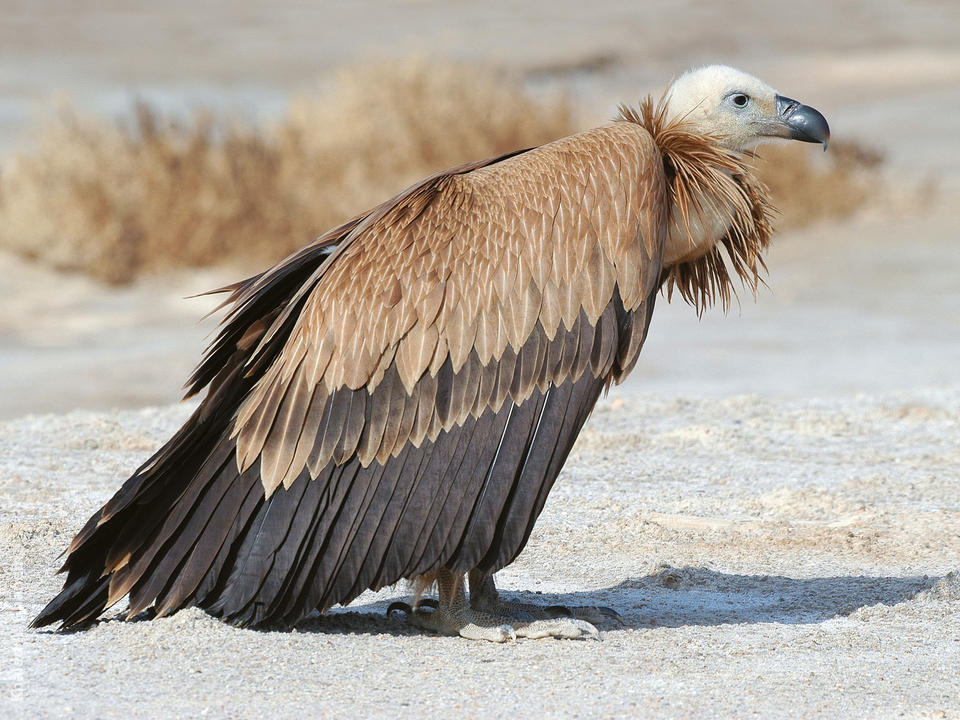Griffon vulture: Red Data Book of Armenia

Hawks and eagles — Accipitridae
Status. A threatened species of low numbers. Listed in the Red Data Books of the former USSR and Russia. Listed in the IUCN Red List of Threatened Species (ver. 3.1) as Least Concern. According to IUCN criteria categorized as Vulnerable VU D1.
Distribution. The species range is spread from North Africa through Southern Europe, Central Asia, Tajikistan and the Altai Mts.
Distribution in Armenia. Occurs in almost all parts of Armenia, except the north–west.
Habitats. Nestles on high mountain cliffs, preferably in deep rocky canyons, at 800–2000 m above sea level.
Biological traits. Only one egg is laid per annum. The staple food items are dead, mostly large ungulates and other big mammals.
Population size and its trends. The guesstimate is 35–40 breeding pairs. Fifteen individuals are kept at the Yerevan Zoo and 110 at the EARAZA zoos.
Major threats. The vulture population can be affected by the use of toxic chemicals in agriculture and silviculture, and also by snaring, trapping, killing or lure poisoning. Reduction of prey base is also an imminent threat.
Conservation measures. At least 5 pairs nestle in Khosrov Forest Reserve. The hunting ranges of other pairs are located within Shikahogh Reserve and Dilijan National Park. Listed in Appendix II of the CITES and in Appendix II of the Berne Convention. It is essential to strengthen control over poaching and killing of vultures, make the use of toxic chemicals environmentally friendly, enforce measures against raptor stuffing and sales of stuffed birds, develop and apply the methods of taxidermist licensing, check the ways of dead raptors coming to taxidermists, and to strongly raise public awareness about these issues.
Suggestions
 The Ministry of Environment sent a letter international partners to draw their attention to the real danger of environmental disasters as a result of Azerbaijan's large-scale aggression towards the territory of Armenia
The Ministry of Environment sent a letter international partners to draw their attention to the real danger of environmental disasters as a result of Azerbaijan's large-scale aggression towards the territory of Armenia
 Vicia pisiformis: Red Data Book of Armenia
Vicia pisiformis: Red Data Book of Armenia
 Vavilovia formosa: Red Data Book of Armenia
Vavilovia formosa: Red Data Book of Armenia
 Trigonella capitata: Red Data Book of Armenia
Trigonella capitata: Red Data Book of Armenia
 Trigonella astroides: Red Data Book of Armenia
Trigonella astroides: Red Data Book of Armenia












